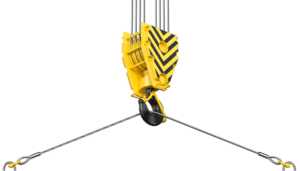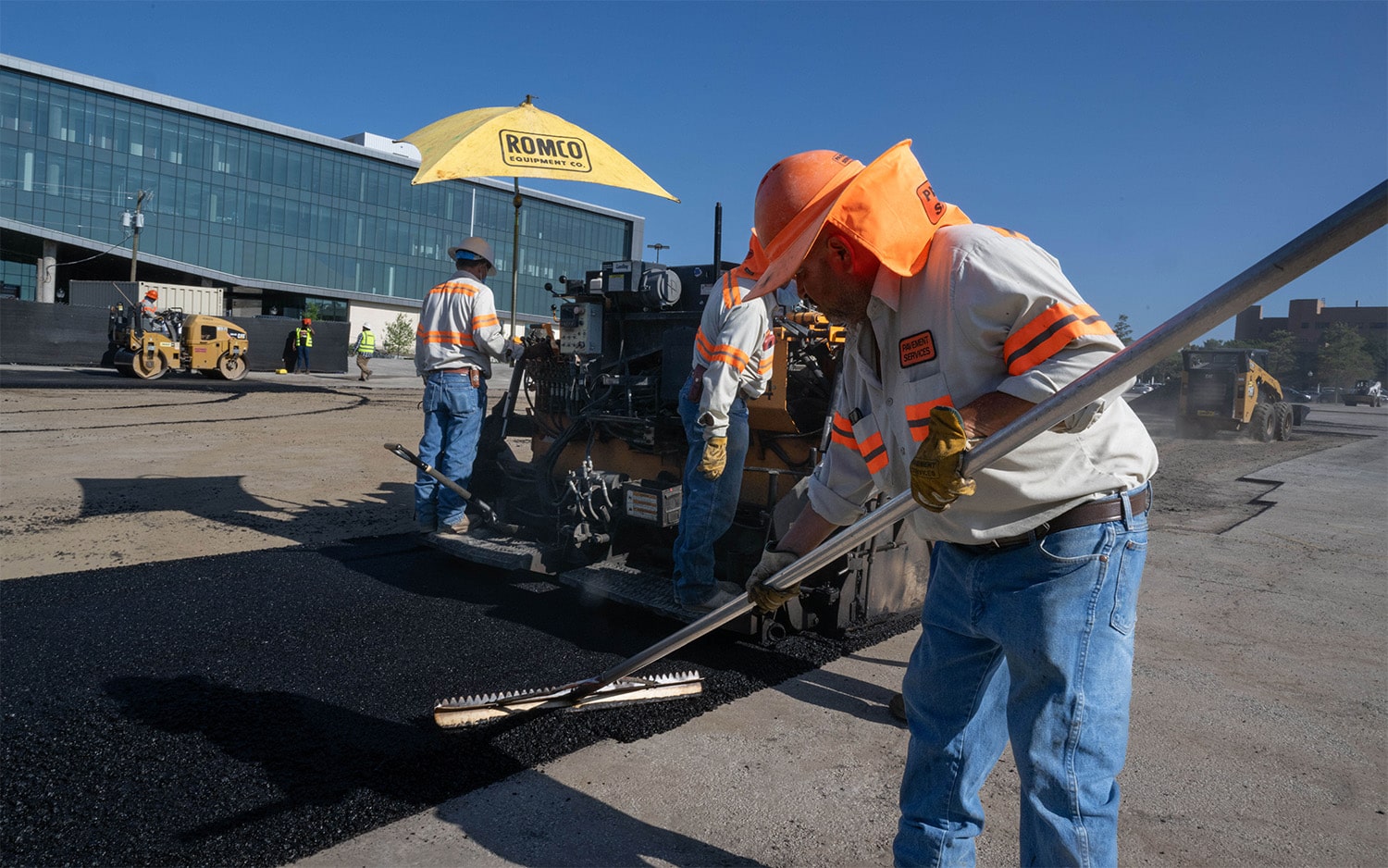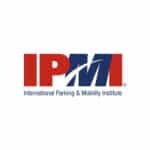
A User’s Guide to Designing for Durability

A User’s Guide to Designing for Durability
istock / Gladiathor; stock.adobe.com / www3d
Presented by the IPMI Planning, Design, & Construction Committee
Introduction
Educating parking professionals regarding the importance of durability standards in parking structures is critical in understanding the stewardship of capital assets under their management responsibilities. Inclusion of these standards within the design process, contract documents, and construction implementation procedures is essential in achieving a long-term cost-effective strategy. Decisions made up front will have long term consequences in the total life cycle sustainability of these assets. The cost of parking structures in the United States has ballooned considerably over the last 10 years with costs exceeding $28,000 per space for above ground freestanding precast structures, to $70,000 per parking space in multi-use buildings, and over $100,000 per space for below grade structures depending on the land footprint, efficiency of the design, and the geographical market.
Many newer facilities incorporate more complex features, aesthetics, and allowances driven by owner tastes, local building codes, design review boards, and access and revenue control systems. These choices and design upgrades can increase costs upwards by 30% to 50%. This is exclusive of project soft costs such as interest accrued during construction, real estate taxes if applicable, architecture, engineering, testing, inspection, and permitting fees, all of which can add an additional 15% to 20% to the project cost. With construction costs continuing to escalate between 5% and 6% annually, parking asset costs will only increase in the future.
Considering the magnitude of this investment, building owners and developers should be aware of the importance of preserving these assets long into the future. To avoid early and frequent expensive garage repairs that disrupt user access and reduce net operating income streams, owners should insist that durability construction features are incorporated into construction documents for these high-priced assets. Using a “belt and suspenders” approach increases the value and long-term viability of the parking structure at a manageable up-front marginal cost. An experienced design professional can be enlisted to prepare a life-cycle cost analysis to assist owners and developers in evaluating the cost/benefit of enhanced durability features.
When selling a parking asset, smart buyers ask what durability structural elements were incorporated into the design and construction of the parking asset. This allows buyers to understand and calculate the structure’s life cycle costs, predict the future long-term viability of the facility, and determine the current value of the asset at purchase.
Design Phase and Pre-Construction
Vision, concept, schematic design, construction drawings, bid evaluation, and contractor selection then BUILD! This is the basic order in which any construction project becomes a reality, but more ‘depth and detail’ is required before construction can begin. What is required before a parking structure can be built to suit the needs of the owner?
Defining the project – The Who, What, When, Why and How
The need for a parking structure precedes the design of the structure. Getting to know the owner’s overall project goals will influence the level of design and durability that goes into building a parking structure. Let’s start with the ‘Who’ – Who is going to utilize the structure? Retail shoppers, commuters, multi-family dwelling residents…you get the point. ‘What’ – this can be a little broader in a sense; ‘What’ kind of vehicles does the parking structure need to support? ‘What’ is the area or space required to build a parking structure? Does the structure have to be built underground, or does it need to include housing and retail space below or on top of it? Will the structure be precast, post-tensioned or conventionally reinforced concrete? When does construction begin and when is it completed? ‘When’ influences the type of garage design of the structure. Garages with significant pre-planning can expedite the construction schedule to deliver a finished product sooner for the owner’s needs. The ‘Why’ can be as simple as the need for more parking spaces in a geographical area, but it can also influence the entire design of the project. Then finally the ‘How’! This is probably the biggest question that needs to be given serious thought! ‘How’ is going to define the building ‘Team’ of experienced professionals (i.e., Design Team – Architect, Structural Engineer, Civil Engineer, Mechanical/Electrical/Plumbing Engineer (MEP), Envelope Consultant, Code Consultant, Elevator Consultant) to list just a few.
Previous experience by a Design Team will reflect the type of parking structure that is built, considering the overall use, location, and lifecycle expectancy for the parking structure. Many times, this decision is made based upon the level of construction expertise in the area. Different parking structure types come with different price tags. An owner’s working experience with a General Contractor (“GC”)/Construction Manager (“CM”) plays a big role in the selection of a Design Team. The low bid by a contractor is not necessarily the best bid. There is a lot to consider. The more work that can be done on the front end before the construction starts, will only pay dividends in the parking structure quality upon completion of the project.
Table of Contents
Authors
John W. Hammerschlag
President
Hammerschlag & Co., Inc.
John W. Nolan, CAPP, MSM
Managing Director of Transportation Services
Harvard University
John M. Porter, PE
Principal
Simpson Gumpertz & Heger Inc.
Edward Trammell, CAPP
Planning and Project Manager
Lexington & Fayette County Parking Authority
Peer Reviewers
David Ryan, PE
President & COO
Walker Consultants
James C. Anderson
Marketing Development Manager, Building Solutions Team
Master Builders
With contributions from IPMI’s Planning, Design, & Construction Committee
- CHAIR: James C. Anderson, Master Builders Solutions, US LLC
- Rita Azrelyant, CAPP, Laybel Consulting
- Jeffrey Goodermote, Swinerton
- Matt Davis, Watry Design, Inc.
- John W. Hammerschlag, Hammerschlag & Co., Inc
- Matthew Kennedy, CAPP, New Brunswick Parking Authority
- Trent Marlow, City of Kannapolis
- John W. Nolan, CAPP, MSM, Harvard University
- John M. Porter, Simpson Gumpertz & Heger Inc.
- David Ryan, PE, Walker Consultants
- Jamie Snyder, CAPP, Walter P Moore & Associates
- Edward Trammell, CAPP, Lexington & Fayette County Parking Authority
- Patrick Wells, DESMAN
- Paul Pirhofer, CAPP, Blink Charging
Some common causes of deterioration, applicable code requirements, and other durability considerations are included in Figures 1 through 3. Think of these figures as “cheat sheets” that provide some background and common themes that often arise during project planning and design meetings.
Figure 1: Common Garage Deterioration
Since parking structures are exposed to harsh environments, more akin to a bridge than a typical enclosed building, durability features play a major role in the performance of the structure throughout its life.
- Chloride Attack — This is the most common cause of reinforcing steel corrosion and concrete deterioration, especially in cold climates where concrete is exposed to chlorides (salts) from deicing salts or coastal areas near salt water. When chloride levels in the concrete reach a high enough threshold, the natural protection on the reinforcement steel (known as the passive layer) is destroyed. Once this occurs and the reinforcement is exposed to moisture, it will corrode (i.e., rust). Rust has a larger volume than the original steel, and as the rust expands it fractures the concrete and leads to delamination (a fracture within the concrete but not visible at the surface) and eventual spalling (dislodgement of the concrete which is readily visible).It is important to note, once chlorides penetrate into concrete they cannot be removed, therefore initial protection of the concrete and embedded reinforcing is an essential component of the long-term durability of the facility.
- Carbonation — This occurs when carbon dioxide in the air reacts with chemical compounds in concrete. This reaction results in a decrease in the pH level of the concrete that breaks down the passive layer on the reinforcement. Similar to chloride attack, once this occurs and the concrete is exposed to moisture, corrosion of the reinforcement occurs which leads to concrete deterioration.
- Freeze-Thaw Damage — When concrete is saturated and exposed to cyclical freeze/thaw cycles, the concrete is exposed to internal pressure because of ice formation (remember water expands when it turns to ice). Repeated freeze/thaw cycles can result in cracking and scaling of the concrete if the concrete does not include appropriate durability features.
- Reactive Aggregates — Alkali-silica reaction (ASR) and alkali-carbonate reaction (ACR) are two causes of concrete deterioration. While most aggregates are inert, some contain silica or carbonates that react with alkalis in concrete. When exposed to moisture, this reaction creates an expansive gel that, when severe enough, will crack and spall concrete.
- Other Causes of Deterioration — The deterioration mechanisms listed above are the most prevalent in parking structures, but there are other mechanisms that cause deterioration, such as abrasion, acid attack, chemical attack, and thermal expansion and contraction. All of these must be accounted for when designing a parking structure.
Figure 2: Code-Required Durability Features
- Common Codes and References used During Design
- Local and State Building Codes
- International Building Code
- American Concrete Institute’s
- Building Code Requirements for Structural Concrete, ACI 318,
- Guide to Durable Concrete (ACI 201.2R)
- Guide for the Design and Construction of Durable Parking Structures (ACI 362.1R)
- Post-Tensioning Institute’s Design, Construction and Maintenance of Cast-in-Place Post-Tensioned Concrete Parking Structures (DC20.7)
- Precast/Prestressed Concrete Institute’s Parking Structures: Recommended Practice for Design and Construction (MNL-129).
- Compressive strength —Minimum compressive strengths are intended to provide strength and durability. Typical values exceed 5,000 psi (pounds per square inch) but need to be determined based on the specific exposure of the structure. ACI provides guidance on minimum values based on durability requirements.
- Water/cementitious ratio — The water–cementitious (w/cm) ratio is the ratio of the mass of water to the mass of cementitious material used in a concrete mix. A lower w/cm ratio leads to higher strength and improved durability since it reduces the concrete’s permeability. Typical values are 0.40 and lower but must be based on the concrete exposure conditions (i.e. exposure to deicing salts or freeze-thaw conditions).
- Concrete Cover — Clear cover is the distance from the concrete surface to the reinforcing steel. The thicker the concrete cover, the more distance moisture/chlorides must travel between an exposed surface of concrete and embedded reinforcement, thereby providing protection to the reinforcing steel. ACI 318 specifies minimum rebar cover based on exposure type for all structural concrete, while ACI 362 recommends minimum concrete cover specific to parking structures. The typical specified concrete clear cover is 2 inches in parking garages but can vary depending on reinforcing steel size and exposure.
- Air entrainment — Air entraining agents (AEA) are added to concrete to give resistance to freezing and thawing. Entrained air is distributed uniformly throughout the mixture in millions of tiny bubbles. The bubbles relieve the pressure generated by water becoming ice (remember ice has a larger volume than water), thus preserving the concrete integrity. ACI 318 gives the air content requirements based on the aggregate sizes and the freeze/ thaw exposure conditions. Typical air entrainment can range from 5% to 8%.
- Aggregate evaluation — Aggregate reactivity needs to be considered and the ready mixed concrete supplier is responsible for identifying and rating their aggregates regarding potential aggregate reaction. This is often done by testing to verify that the aggregates are non-reactive.
- Curing — Curing is an important phase in the concreting process and proper methods must be used to produce a final concrete product that meets the project requirements. Proper curing helps the concrete reach its intended strength, reduces cracking, scaling, and improves freeze/thaw resistance. Pay special attention to hot weather and cold weather concreting. ACI 305, Guide to Hot Weather Concreting, and ACI 306, Guide to Cold Weather Concreting, are good references.
Figure 3: Other Design Considerations
- Floor Drainage — Poor pitch to drain or drains spaced too far apart results in ponding water within the parking structure. The design goal should be a standard of 2% slope to drains which can usually be achieved over a majority of the slab and locating drains strategically to avoid excessive spacing and risk of ponding.
- Corrosion Inhibitors — Corrosion inhibitors are often engineered into the concrete mix design and added when the concrete is being batched. The additional cost adds significant protection to the life of the structure by chemically protecting the reinforcing steel from chlorides.
- Epoxy Coated Reinforcement — These types of coatings on reinforcing steel are effective to provide a barrier between the reinforcing steel and water/chlorides (from deicing chemicals).
- Sealers — Sealers are generally inexpensive and the first line of preventative maintenance in a parking structure; either during initial construction or once the parking structure exceeds 5 years in service. Adequate site preparation with light “shot-blasting” will produce a clean and open porous surface to accept a VOC compliant 100% solids silane type sealer. All shot should be swept up prior to application as rusting of the shot after application will cause surface staining.
- Vehicular/Pedestrian Traffic — Bearing Waterproof and other Membranes – Membranes will extend the lifecycle of a parking structure and are more expensive than sealers. If adequate concrete cover over top steel is achieved, initial application of membranes is optional except as noted below. Taking concrete powder samples every two to three years to test for chloride penetration and concentration which dictates when chloride concentration exceeds the threshold for corrosion and a membrane should be considered.
Waterproofing membranes are required on supported slabs over occupied spaces, crane openings (“Glory Holes”, in underground garages), post-tensioned pour strips, and encapsulated post-tensioned cable pockets. - Broom Finish — Concrete – A medium broom finish to the poured concrete is highly recommended to provide adequate floor surface texture to minimize slipping especially when the slab is wet. Swirl finishes are preferred, but only if performed by experienced and competent laborers where quality is assured.
- Water Bibs — Water bibs should be placed adjacent to every floor level slab at conveniently accessed wall areas for garage washdowns and will enable a washdown program to remove sand and salt from concrete slabs. A complete sweeping of facilities prior to washdowns is highly recommended.
Quality Assurance/Quality Control
One item that should not be overlooked within the construction contract documents for parking facilities is a well thought out plan for in-field construction administration. Many owners rely on the General Contractor or Construction Manager to ensure that the job is performed in accordance with these documents.
General Contractors and Construction Managers generally coordinate the work with their subs and expect the subs to execute accordingly. Proper inspection, monitoring and oversight is essential to assuring attainment and compliance with design and code requirements.
Special care must be taken to develop a Construction Quality Control/ Quality Assurance program. -Retention of a qualified third-party testing and inspection service by the owner to oversee the actual production of the work and outline the necessary processes expected for quality is essential. Representatives from the testing and inspection service must be present in-field during times of execution to ensure that quality and outcome will not be compromised.
An independent engineer (QA/QC specialist) experienced in the specific type of parking structure, such as post-tensioned construction and/or precast/prestressed concrete, should be employed to provide a quality outcome. Quality Assurance prior to and during concrete placement of structural components and at certain time intervals at the precast plant and concrete batching facility helps ensure that the work meets the contract requirements
The primary responsibility of the (QA/QC specialist) is to ensure all team members are performing their duties to achieve a quality outcome for the owner. He/she shall also assist with quality control monitoring and work with the structural engineer and various testing agencies on reviewing pre-placement formwork and reinforcing steel size/positioning, on-site concrete quality delivery, and monitor all elements of placement and finishing. An appropriate “all trade” sign-off document should be required prior to any concrete placement to ensure all durability elements are set up properly and agreed to prior to moving forward. Concrete placement sizes should be coordinated and approved by the engineer and contractor so that the work can be placed in reasonable time periods without overwhelming the crew size which may jeopardize quality placement.
In addition, a concrete testing program should be established to assure quality and proper compressive strengths are delivered on the project. A review of the concrete plant documentation should be performed periodically with lab testing to verify that actual design mix and additives are achieved according to specifications.
Post-Construction
Just as it is essential to have a team in place to represent the owner’s interests during the construction phase, the same is true regarding the post-construction phase. Parking structures experience extreme levels of abuse from both the elements and users. Without a proactive long-term maintenance program, the repair and rehabilitation of the structure can become not only a logistical problem, but an even more painful fiscal problem. Even the highest quality construction is vulnerable to seasonal freeze-thaw cycles, moisture, vehicular fluids, deicing salts, and occasional damage suffered from garage users and their vehicles. For those reasons, it’s wise to have a Capital Asset Management Plan (“CAMP”) in place, for an engineer familiar with parking structures to provide annual guidance and oversight.
While many parking professionals may be familiar with typical annual maintenance and repair items, owners or other stewards of the facility may not. At best, this often leads to tension between owner and management over repair costs and budgeting associated with management of the facility. At worst delaying and deferring repairs leads to an even more costly repair scope in the future. Repairs left unaddressed can also lead to life safety issues within the facility that could have been avoided had a proper maintenance and repair cycle been followed.
The CAMP should be seen as a living document and should be updated annually. By enlisting the services of an engineering consultant, a thorough condition assessment of the facility can be performed. Concrete testing will provide critical data with respect to chloride concentration levels and help with analysis of reinforcing steel within the slab, while chain dragging will help locate areas of distressed concrete. All expansion joints and facades should also be inspected. Other items in the assessment should include storm drainage and fire protection systems, plumbing, HVAC, lighting and controls, electrical and life safety systems, as well as stair and elevator towers. The findings from the facility assessment will form the basis for the CAMP with repair and maintenance scopes broken out on a yearly schedule. The engineer should also provide the owner with a line-item cost estimate for the contents of each yearly forecast. The CAMP can be structured to any length the owner desires, with five-, ten- and twenty-year schedules typically used. Not only does this allow the document to provide a guide for typical repair schedules, but it also acts as an important resource for annual budgeting and prioritizing. Every owner should strive to maintain a capital repair maintenance reserve based on the annual maintenance estimates stipulated within the CAMP. Annually reserving up to $250 per space may provide an adequate fund for maintaining a well-constructed facility, but a lack of repairs can lead that figure to stray to $400 per space and higher to protect the structure in a meaningful way. This makes having a capital repair plan in place more important, as maintenance deferred will only lead higher repair costs in the future, and a potentially shorter life span of the structure.
Conclusion
When the structure is finally open and it is now serving its purpose, one could say that the ‘work is complete!’ These structures are made up of massive amounts of structural concrete and are constantly exposed to all elements of the weather. Construction mode is replaced by maintenance mode for the life of structure. Working with a design team and a good parking garage operating firm can help develop an annual review of the structure for annual maintenance. Some activities including picking up trash and debris; deterring birds such as pigeons and starlings from making the garage their home; and washing down the parking decks to remove salts and gravel provide long term benefits.
Simple things make a ‘big’ difference in extending and even exceeding the expected service life of a parking structure. Durability planning during design, quality construction with QA/QC performed by a qualified professional, and performance of regular condition assessments and repairs throughout the life of the facility will allow owners to extend the service life of the asset while reducing the long-term cost of ownership.
This article was written and reviewed by the IPMI Planning, Design, & Construction Committee.
-
This author does not have any more posts.

Parking on Plastic
A New Frontier in Sustainability

From the Editor
The Power of Planning Design 038 Construction

Rethinking Parking Facility Design
How Electric Cars are Changing the Architecture of Parking <









